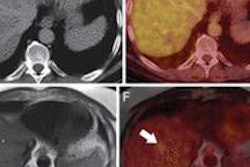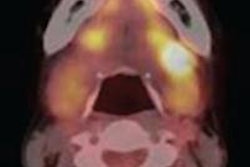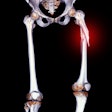Dear AuntMinnie Member,
A radiologist from Atlanta has found a novel way of making radiology more accessible to the masses. Dr. Anand Lalaji has launched a new website called InsideInjuries.com to demonstrate the radiologic presentation of sports injuries common to athletes.
The idea is simple: Whenever a famous athlete sustains an injury, InsideInjuries.com posts an image from an anonymous case with a similar presentation, such as a sprained ankle or a medial meniscal tear (the site never uses cases from actual athletes due to HIPAA restrictions).
What's the point? Sports fans learn more about what's ailing their heroes, while at the same time discovering the value of medical imaging. Dr. Lalaji believes the site could help raise radiology's profile at a time when the discipline is badly in need of a PR makeover.
Learn more by clicking here, or visit our MRI Digital Community at mri.auntminnie.com.
MBIR vs. ASIR
Meanwhile, in our CT Digital Community, we're highlighting a new article that compares two data reconstruction techniques for CT radiation dose reduction: adaptive statistical iterative reconstruction (ASIR) and model-based iterative reconstruction (MBIR).
ASIR is the older of the two, delivering impressive radiation dose reductions for many exams when it became commercially available in 2008. The arrival of MBIR in 2011 offered the promise of even bigger dose reductions.
In the current study, researchers from the University of Michigan compared the two techniques in a pediatric cancer population, where repeat scans are common over time. They graded each technique in terms of overall dose reduction and image quality as assessed by an expert panel and by image noise.
Which technique won? Find out by clicking here, or visit our CT Digital Community at ct.auntminnie.com.
Future of molecular imaging
Finally, we take a look at the future of molecular imaging in a new article in our Molecular Imaging Digital Community.
Features editor Wayne Forrest interviewed three molecular imaging experts for their perspectives on what's needed to grow the emerging specialty in the years to come. Molecular imaging has great potential to guide therapy and diagnostic decisions, but training and education have become a major issue.
Most experts acknowledge that there should be a specialized training track devoted to molecular imaging, but there aren't enough senior-level instructors available, they say. Fortunately, new physicians are entering the field with the cross-training in cellular and molecular biology needed to really affect the field.
Learn more by clicking here, or visit the community at molecular.auntminnie.com.




















